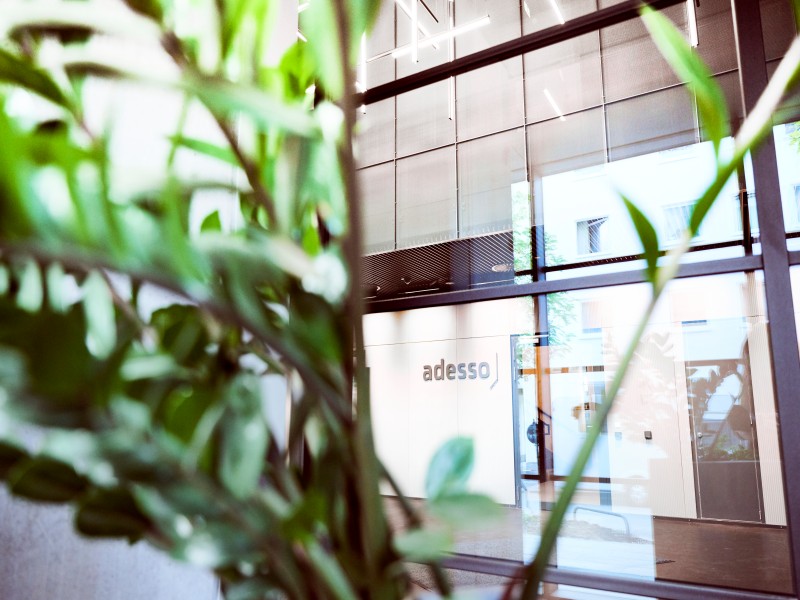6. February 2023 By Zoe Holdt, Timo Hartmann and Ellen Szczepaniak
Saving energy through gamification
Gamification is generally understood as the use of elements that are typical of games in a non-game context. This includes learning processes, advertising measures and even the structuring of workflows and everyday activities. Games use special elements such as puzzles, experience points, level-ups or awards and trophies to motivate people to improve their own skills, learn new things or compete with others to see how they measure up.
Today, using elements that are typical of games is not only done to increase motivation, but also to acquire and retain customers. The aim is to make unattractive processes – which often are used in the entertainment industry and advertising – more interesting and motivate users to accomplish complex tasks and reward them when they do. Examples of this include surveys or purchase processes that can be supplemented with playful elements to avoid premature cancellations. Companies are also using small games as advertising space to place their products and services and are doing so with increasing frequency. Social gaming applications are particularly popular – games on social platforms, in other words. They offer the possibility to use the typical network functions to distribute advertisements and promote interaction with users.
Gamification is also proving to be a successful method in the institutional and extracurricular learning sector: in cases such as this, gamification primarily aims to increase users’ mental stamina and diligence. These factors can also be used in the context of saving electricity, for example, to avoid carelessly leaving lights on when leaving the house and instead encourage people to go back and switch the lights off. That being said, it is also particularly interesting for companies to find out how employees can be motivated to do something for their company and the environment, as saving electricity at work provides them no direct additional benefit.
How are energy-saving measures currently being implemented?
In this day and age, a lot of energy-saving measures are already firmly integrated into our everyday lives: LED lights, timer switches and the conscious avoidance of artificial light are already commonplace in many households. The savings potential in offices is still over 50 per cent in some instances. That being said, many approaches could be implemented in offices in a way akin to how it is done in private households. You can switch off the light in the office during the day, even if a dark winter quickly entices you to keep it on. It is often the case that doing this can also reduce screen brightness, which in turn saves more electricity and your eyes. The type of light is also decisive for energy consumption in the office because apart from the wide range of customisation options regarding shape and colour, on average, LED lights consume an about 90 per cent less electricity than equivalent light bulbs do. Motion detectors are an excellent solution for increasing the efficiency of the LEDs and relieving employees of the active effort needed to operate them. They prevent lights from being unnecessarily left on in communal areas.
Devices such as laptops and desktop PCs also entail avoidable hidden costs. These devices continue to consume power overnight in standby mode and are often left unlocked during meetings or breaks. Putting computers in standby mode every time you leave your desk and completely switching them off overnight can further reduce power consumption.
What does adesso do?
Lots of adessi in various working groups are occupied with the topic of sustainability, a topic which is also being promoted across all Lines of Business. Some measures have already been firmly anchored at adesso for a while now. These include:
- Using recycled paper in our offices. This means that we use 60 per cent less energy and up to 70 per cent less water per product.
- Consistently separating waste in all our offices to promote recycling.
- Using energy-saving lights and motion sensors and almost exclusively green electricity.
- Giving preference to regional and fair-trade products.
- Our locations’ facilities being well connected to public transport services.
- Only purchasing electrical appliances with a green energy label or ecolabel.
- Contracting a specialised disposal company to refurbish, reuse or recycle old laptops, smartphones and the like. Since February 2022, we have had several tonnes of old appliances collected from the offices in Berlin and Dortmund alone. A large portion of them can even be reused after being refurbished, which has enabled us to save over 135,000 kilograms of CO2 equivalents.
What potential does gamification offer in this area?
We have already seen that gamification brings together the widest variety of factors and is intended to offer users an incentive to adopt certain behavioural patterns and, in the best case, maintain them.
When it comes to saving energy, this incentive is clear – we save money and protect the environment! However, we would like to take the concept of financial benefit a little further at this point and start looking into the idea of how users can be rewarded even more for saving energy. There are already platforms right now that present this idea to municipal utilities and other suppliers as a business model. For example, users of this portal are rewarded with points for replacing the light bulbs in their houses with models that save energy. In turn, these models are then offered at market prices via the supplier. Even training programmes on saving energy are rewarded as well. These points can then be redeemed for leisure activities, in retail shops and with other partners.
Another way to fully exploit the portal’s potential is to simultaneously use it as a portal for reporting energy consumption so that customers can conveniently enter their meter readings there. This way, as many potential users as possible become aware of the platform and it offers a way to bypass automated meter reading (smart meter rollout). The presence of smart meters will open up many more possibilities to monitor and adjust energy consumption in the future. On top of that, it will be possible to offer premiums in a much more specific and household-related way. This model is particularly interesting for companies, and with a leisure activity as a reward, can also provide an incentive for employees.
Conclusion
To sum it up, it can be said that these applications are a good option for saving electricity and energy, but so far, they only provide a small incentive to save additional energy. Small playful elements can expand our conventional energy-saving measures and help us to take responsibility and develop a more conscious approach to energy. A look into the future: competitive elements or daily challenges, for example, nevertheless suggest an additional incentive that can help us to make our planet a little bit better.



